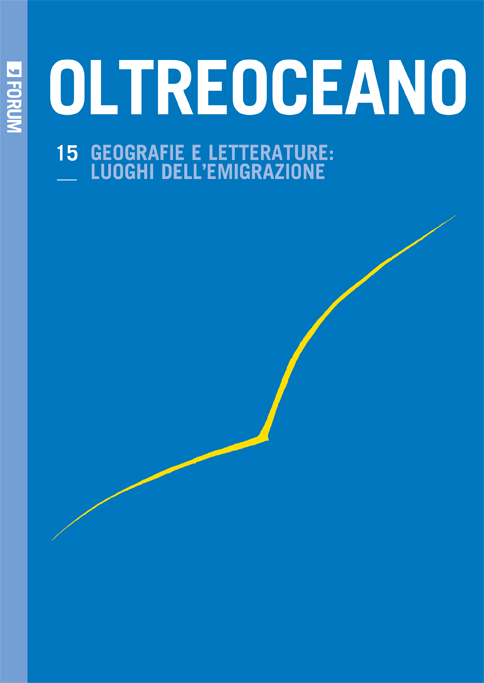Nuevos espacios para el sujeto migrante en la narrativa cubana del siglo XXI: La viajera de Karla Suárez
Keywords:
narrativa cubana contemporánea, migración, espacio urbanoAbstract
En La viajera, Suárez pone en escena una lectura alternativa del espacio urbano en su relación con el sujeto. Los periplos de la protagonista desarman el imaginario clásico del yo en la ciudad, desvelando inéditos modelos de identidad. El artículo se propone profundizar las modalidades de articulación del discurso migratorio y la edificación de un nuevo concepto de identidad y patria.
New Spaces for Migrant Identity in 21st Century Cuban Narrative: La Viajera by Karla Suárez
In the novel La viajera, Suárez presents an alternative reading of urban space in its relationship with the subject. The journeys of the protagonist deconstruct the classic imaginary of the subject in the city, revealing new models of identity. The article aims to deepen the ways in which migration discourse is articulated and to create a new concept of identity and homeland.
Nuovi spazi per il soggetto migrante nella narrativa cubana del XXI secolo: La viajera di Karla Suárez
Nel romanzo La viajera, Suárez presenta una lettura alternativa dello spazio urbano in relazione con il soggetto migrante. L’itinerario della protagonista decostruisce il classico immaginario dell’io nella città, svelando inediti modelli identitari. L’articolo si propone di approfondire le modalità di articolazione del discorso migratorio e la creazione di un nuovo concetto di identità e patria.
Downloads
References
Álvarez Álvarez, L. & Mateo Palmer, M. (2005): El Caribe en su discurso literario. Santiago de Cuba: Oriente.
Araujo, N. (1998-1999): El espacio otro en la escritura de las (novísimas) narradoras cubanas. Temas, 16-17, pp. 212-217.
Cacciari, M. (2010): La ciudad. Barcelona: Gustavo Gili.
Campuzano, L. (2010): Literatura de mujeres y cambio social: narradoras cubanas de hoy. En L. Campuzano, Las muchachas de La Habana no tienen temor de Dios. Escritoras cubanas (s. XVIII-XXI) (pp. 142-168). La Habana: Unión.
Campuzano, L. (2012): Residencia y errancia: perfiles de la emigración en La viajera de Karla Suárez. Oltreoceano, 6. pp. 79-87
Cuesta, M. (2012): Cuba post-soviética: un cuerpo narrado en clave de mujer. Santiago: Cuarto Propio.
Cuesta, M. (2012): Karla Suárez, Silente Viajera. Diálogo, 15, 2. Recuperado de http://via.library.depaul.edu/dialogo/vol15/iss2/3
Martí, J. (2002): Nuestra América. C. Vitier (Ed.). Guadalajara: Universidad de Guadalajara.
Nucera, D. (2002): Los viajes y la literatura. A. Gnisci (Ed.), Introducción a la literatura comparada (pp. 241-290). Barcelona: Crítica.
Nuez, I. de la (1997): El destierro de Calibán. Diáspora de la cultura cubana de los 90 en Europa. Encuentro de la cultura cubana, 4-5, pp. 137-144.
Ortiz, Fernando (1978): Contrapunteo cubano del tabaco y del azúcar. Caracas: Ayacucho.
Scarabelli, L. (2009): En el fogón del Caribe. Fernando Ortiz e la dialettica del molteplice. En M. Porciello & M.Succio (Eds.), Il saggio in Spagna e in Ispanoamerica tra il 1914 e il 1945 (pp. 281-300). Milano: Arcipelago.
Suárez, K. (2005): La viajera. Barcelona: Roca.
Downloads
Published
How to Cite
Issue
Section
License
Copyright (c) 2019 Oltreoceano - Rivista sulle migrazioni

This work is licensed under a Creative Commons Attribution-NonCommercial-ShareAlike 4.0 International License.
The authors undertake to comply with the following conditions, which are considered accepted at the time of submission of their contributions.
The sending of a text implies that it is unpublished and not submitted to be published elsewhere.
1. If accepted, the author shall confer on the publisher the right to publish and distribute it both in paper form and in the online electronic edition. The published articles will be downloadable and made available in open access.
2. Provided that it correctly indicates that the first publication took place in the journal Oltreoceano. Rivista sulle migrazioni the author has the right to: a) reproduce the article in separate extracts or collected in a volume; b) publish the article on their personal website or teaching site provided that these sites are of a non-commercial nature; c) deposit the article in online archives of a non-commercial nature, linked to the institution they belong to or as part of projects for the non-commercial dissemination and open access of scientific works.
The use of contributions by third parties, for commercial or otherwise unauthorized purposes, is not allowed. The publisher declines all responsibility for the unauthorized use of the material published in the journal.












